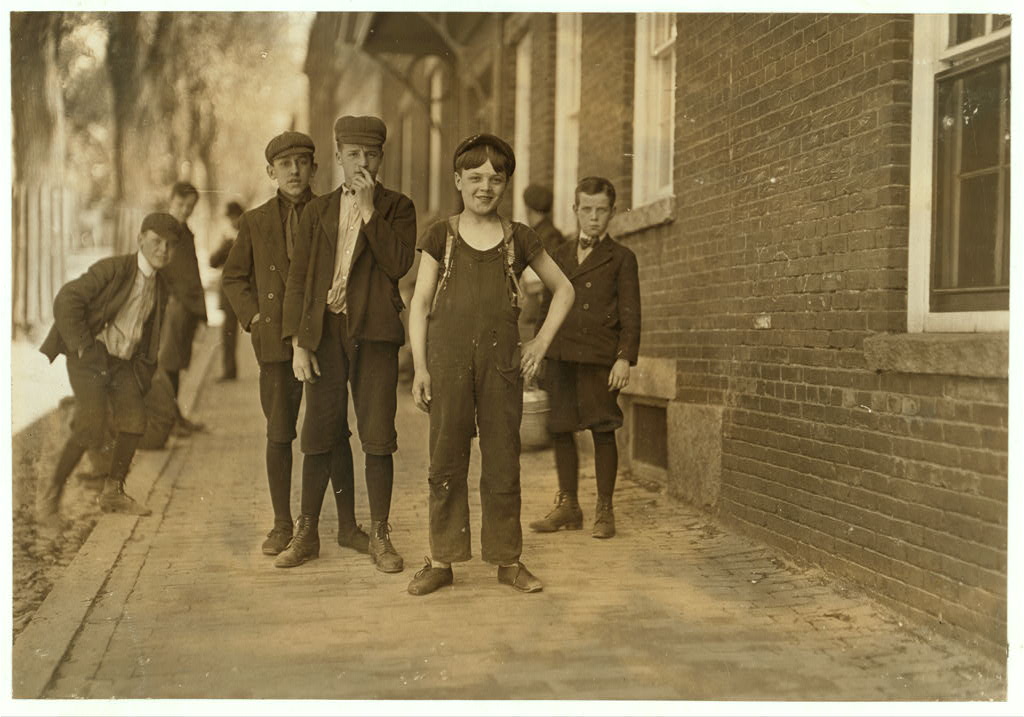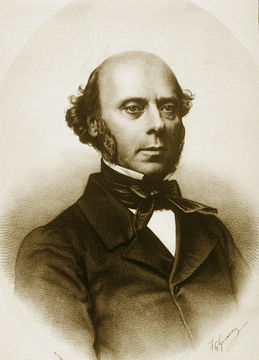Browse "Communities & Sociology"
-
Article
Francis Marion Beynon
Francis (née Frances) Marion Beynon, journalist, novelist, suffragist (born 26 May 1884 in Streetsville, ON; died 5 October 1951 in Winnipeg, MB). Francis Marion Beynon has been noted for her courage as a pacifist, her outspoken anti-religious views and her anti-racism.
"https://d2ttikhf7xbzbs.cloudfront.net/media/media/2a82be4c-c839-43a2-9ba1-6e2317d87639.jpg" // resources/views/front/categories/view.blade.php
https://d2ttikhf7xbzbs.cloudfront.net/media/media/2a82be4c-c839-43a2-9ba1-6e2317d87639.jpg
-
Article
Francis Pegahmagabow
Francis “Peggy” Pegahmagabow, Anishinaabe (Ojibwe) chief, Indigenous rights advocate, war hero (born on 9 March 1891 on the Parry Island reserve, ON; died 5 August 1952 at Parry Island, ON). One of the most highly decorated Indigenous people in Canada during the First World War, Pegahmagabow became a vocal advocate for Indigenous rights and self-determination. (See also Indigenous Peoples and the World Wars.)
"https://d2ttikhf7xbzbs.cloudfront.net/Francis Pegahmagabow (2).jpg" // resources/views/front/categories/view.blade.php
https://d2ttikhf7xbzbs.cloudfront.net/Francis Pegahmagabow (2).jpg.jpg)
-
Article
Franco-Americans
Between 1840 and 1930, nearly a million francophones from Canada emigrated to the United States. (See also Canada and United States.) Most emigrants came from Quebec. There were also Acadians from the Atlantic provinces. These emigrants lived throughout the Northern US, but most settled in New England. The largest cohort worked in the textile industry. The 1880s and 1890s were the crest of several waves of emigration that ended with the Great Depression. Also known as Franco-Americans, about two million French Canadian descendants live in New England today.
"https://d2ttikhf7xbzbs.cloudfront.net/media/media/service-pnp-nclc-01700-01784v.jpg" // resources/views/front/categories/view.blade.php
https://d2ttikhf7xbzbs.cloudfront.net/media/media/service-pnp-nclc-01700-01784v.jpg
-
Article
François Hertel
François Hertel, pseudonym of Rodolphe Dubé (b at Rivière-Ouelle, Qué 31 May 1905; d at Montréal 4 Oct 1985). At 20 he entered the Jesuits and he was ordained in 1938.
"https://development.thecanadianencyclopedia.ca/images/tce_placeholder.jpg?v=e9dca980c9bdb3aa11e832e7ea94f5d9" // resources/views/front/categories/view.blade.php
https://development.thecanadianencyclopedia.ca/images/tce_placeholder.jpg?v=e9dca980c9bdb3aa11e832e7ea94f5d9
-
Article
François Saillant
François Saillant, activist, community worker, politician, author (born 15 June 1951 in Quebec City, QC). Coordinator and spokesperson for the Front d’action populaire en réaménagement urbain (Popular Action Front for Urban Planning) from 1979 to 2016, he was also a candidate for Québec solidaire in three provincial elections. He is the author of three books on the right to housing.
"https://development.thecanadianencyclopedia.ca/images/tce_placeholder.jpg?v=e9dca980c9bdb3aa11e832e7ea94f5d9" // resources/views/front/categories/view.blade.php
https://development.thecanadianencyclopedia.ca/images/tce_placeholder.jpg?v=e9dca980c9bdb3aa11e832e7ea94f5d9
-
Article
François-Xavier-Antoine Labelle
An ardent supporter of building the CPR in 1872, he was sent as an envoy to Europe by the Canadian government in 1885 and the Québec government in 1890. In 1888 Premier Honoré MERCIER appointed him deputy minister of agriculture and colonization.
"https://development.thecanadianencyclopedia.ca/images/tce_placeholder.jpg?v=e9dca980c9bdb3aa11e832e7ea94f5d9" // resources/views/front/categories/view.blade.php
https://development.thecanadianencyclopedia.ca/images/tce_placeholder.jpg?v=e9dca980c9bdb3aa11e832e7ea94f5d9
-
Article
François-Xavier Garneau
He excelled in primary school, but lack of money apparently barred his way to a classical education. His self-education and natural reserve explain the "proud independence" which impressed his contemporaries.
"https://d2ttikhf7xbzbs.cloudfront.net/media/media/a75df73a-e1e0-4b27-ba7a-76631cfc6a0e.jpg" // resources/views/front/categories/view.blade.php
https://d2ttikhf7xbzbs.cloudfront.net/media/media/a75df73a-e1e0-4b27-ba7a-76631cfc6a0e.jpg
-
Article
Françoise-Marie de Saint-Étienne de La Tour
Françoise-Marie de Saint-Étienne de La Tour, née Jacquelin, Acadian heroine (b in France 1602; d at Ft La Tour [NB] 1645). Civil war raged in Acadia in 1640 when she married Charles de Saint-Étienne de LA TOUR, one of 2 claimants to the colony's governorship.
"https://d2ttikhf7xbzbs.cloudfront.net/media/media/4fc6b68c-735c-4311-b452-cbbdfebe9ce7.jpg" // resources/views/front/categories/view.blade.php
https://d2ttikhf7xbzbs.cloudfront.net/media/media/4fc6b68c-735c-4311-b452-cbbdfebe9ce7.jpg
-
Article
Francophone
In Canada, the term francophone can refer to someone whose first language is French. They might most often use it to speak, read, write or think. French might also be their most often used language at home. Being francophone can also simply mean being able to speak the language fluently. According to the 2016 census, approximately 10.36 million Canadians, or 29.8 per cent of the population, declared being able to communicate in French. Around 7.167 million reported that French was their only mother tongue while 7.706 million Canadians declared French as the first official language they spoke.
"https://d2ttikhf7xbzbs.cloudfront.net/TCE_placeholder.png" // resources/views/front/categories/view.blade.php
https://d2ttikhf7xbzbs.cloudfront.net/TCE_placeholder.png
-
Article
Francophones of Alberta (Franco-Albertains)
In the Prairies, the names of rivers and trading posts bear the mark of explorers and voyagers who travelled the region during the 18th and 19th centuries. Agriculture and the petroleum industry attracted many migrants from Quebec, Acadia, Ontario and neighbouring provinces, but also from New-England, France and Belgium. In 2016, 418,000 Albertans (10.5 per cent of the population) were of French or French-Canadian origins (see: Francophone; Alberta; History of Settlement in the Canadian Prairies).
"https://d2ttikhf7xbzbs.cloudfront.net/media/new_article_images/francoalbertains/franco_albertan_flag_drapeau.jpg" // resources/views/front/categories/view.blade.php
https://d2ttikhf7xbzbs.cloudfront.net/media/new_article_images/francoalbertains/franco_albertan_flag_drapeau.jpg
-
Article
Francophones of British Columbia
The francophone presence in British Columbia has its origins in the colonization of the Pacific Northwest by Europeans at the turn of the 19th century.
"https://d2ttikhf7xbzbs.cloudfront.net/media/media/bfb65c27-6395-4d1f-b12b-84c6f760fb29.png" // resources/views/front/categories/view.blade.php
https://d2ttikhf7xbzbs.cloudfront.net/media/media/bfb65c27-6395-4d1f-b12b-84c6f760fb29.png
-
Article
Francophones of Manitoba
Manitoba’s “francophonie” is the term used to designate French-speakers in Manitoba, historically referred to as “Franco-Manitobans.” Changes in 2017 to the name of the Société de la francophonie manitobaine (formerly the Société franco-manitobaine) and the definition of “francophone” in the provincial law on French language services reflect the changing nature of the community itself. The core of Manitoba’s francophones is formed by descendants of voyageurs as well as settlers from Québec and Europe, but since the early 2000s the community has seen a growing number of immigrants from non-European countries as well as an increasing integration of francophones for whom French is not their first language.
"https://d2ttikhf7xbzbs.cloudfront.net/media/media/bc92f05e-a646-436a-b90f-69d490ba42f5.png" // resources/views/front/categories/view.blade.php
https://d2ttikhf7xbzbs.cloudfront.net/media/media/bc92f05e-a646-436a-b90f-69d490ba42f5.png
-
Article
Francophones of Saskatchewan (Fransaskois)
The Fransaskois are francophones living in Saskatchewan. According to recent Canadian statistics, 1.5 per cent of the population (16,373 inhabitants) have French as their mother tongue and 1.3 per cent of the population (14,440 inhabitants) have French as their first official language (see French language in Canada).
"https://d2ttikhf7xbzbs.cloudfront.net/media/new_article_images/Fransaskois/Flag_Francophones_Saskatchewan_Fransaskois.png" // resources/views/front/categories/view.blade.php
https://d2ttikhf7xbzbs.cloudfront.net/media/new_article_images/Fransaskois/Flag_Francophones_Saskatchewan_Fransaskois.png
-
Article
Francophonie and Canada
The term francophonie has been in common use since the 1960s. It has several meanings. In its most general sense, it refers to all peoples and communities anywhere in the world that have French as their mother tongue or customary language. The term can also refer to the wider, more complex network of government agencies and non-government organizations that work to establish, maintain and strengthen the special ties among French-speaking people throughout the world. Lastly, the expression “La Francophonie” is increasingly used as shorthand for the Organisation internationale de la Francophonie (International Organisation of La Francophonie).
"https://d2ttikhf7xbzbs.cloudfront.net/media/media/5a849720-0aa9-4516-a19a-0b599bde2bc2.png" // resources/views/front/categories/view.blade.php
https://d2ttikhf7xbzbs.cloudfront.net/media/media/5a849720-0aa9-4516-a19a-0b599bde2bc2.png
-
Article
Frank Calder
Frank Arthur Calder, OC, Nisga’a politician, chief, businessman (born 3 August 1915, Nass Harbour, BC; died 4 November 2006 in Victoria, BC). Frank Calder was the first Indigenous member of the BC legislature, elected in 1949. Calder is best known for his role in the Nisga’a Tribal Council’s Supreme Court case against the province of British Columbia (commonly known as the Calder case), which demonstrated that Aboriginal title (i.e., ownership) to traditional lands exists in modern Canadian law.
"https://d2ttikhf7xbzbs.cloudfront.net/media/media/9722efec-c466-4256-b057-4d35a1e00a00.jpg" // resources/views/front/categories/view.blade.php
https://d2ttikhf7xbzbs.cloudfront.net/media/media/9722efec-c466-4256-b057-4d35a1e00a00.jpg
